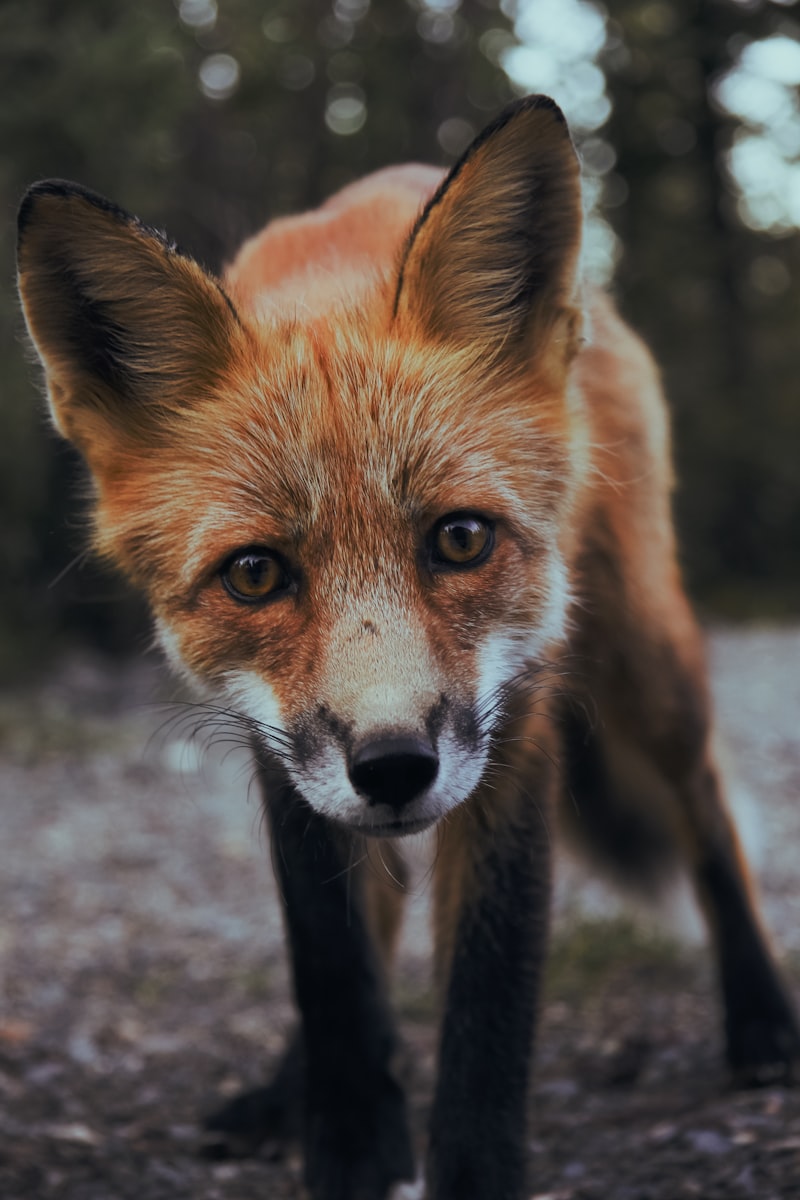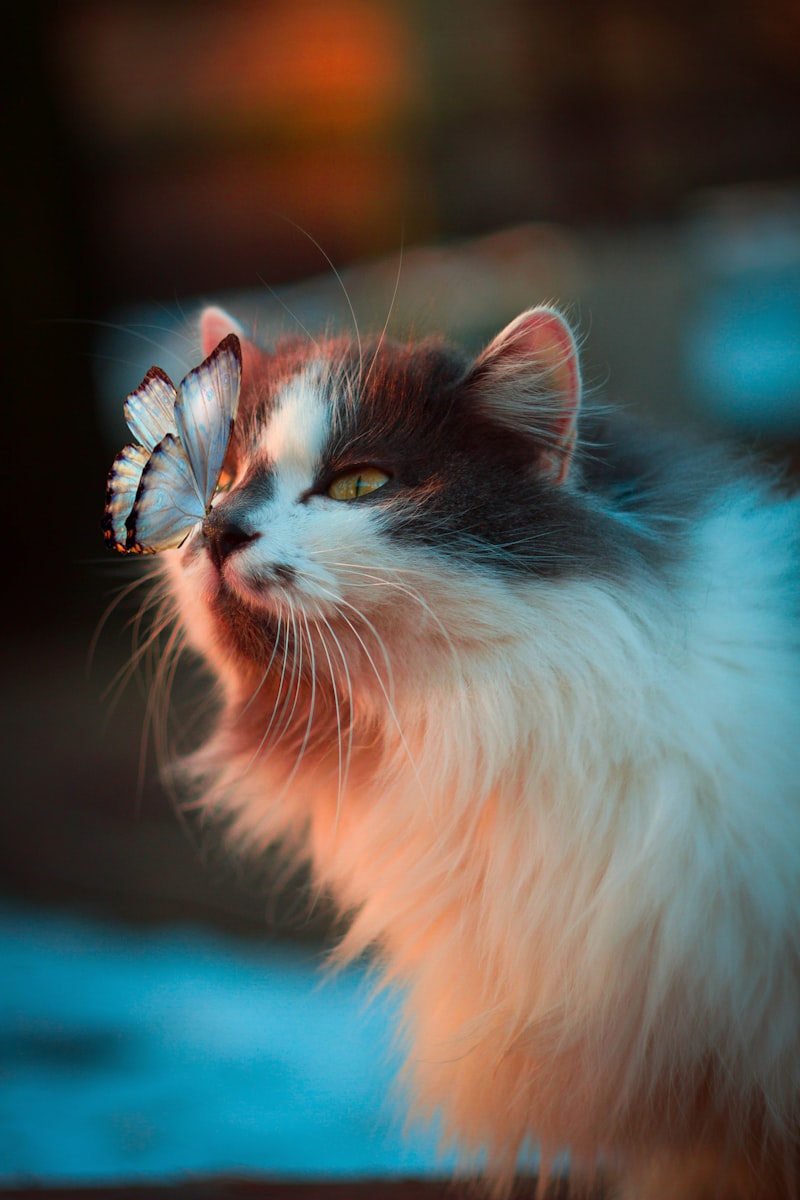Did you know that the animal kingdom is full of surprises? From quirky habits to downright bizarre behaviors, animals never cease to amaze us with their unique ways of adapting to their environments. Let’s dive into some of the most peculiar animal behaviors that will leave you in awe.
Ever heard of the decorator crab? This crafty crustacean takes camouflage to a whole new level by adorning itself with bits of seaweed, sponges, and even small animals to blend seamlessly into its surroundings. It’s like wearing a constantly changing disguise!
Then there’s the superb lyrebird, a master of mimicry found in the forests of Australia. This avian virtuoso can imitate not just other bird calls but also sounds like chainsaws, camera shutters, and even car alarms. Imagine hearing a forest symphony orchestrated by a bird!
Moving on to the sneaky behavior of the Amazonian giant water lily. This remarkable plant has adapted to attract pollinators not with sweet nectar or bright colors, but with heat! It generates its own warmth, up to 35°C (95°F) above the surrounding air temperature, to attract cold-blooded insects seeking warmth. Nature’s own hot spot!
Have you heard of the strange phenomenon known as synchronous fireflies? In places like Southeast Asia and the Great Smoky Mountains in the USA, thousands of fireflies gather and flash their lights in perfect unison. It’s a mesmerizing display that scientists are still unraveling the mysteries of.
And let’s not forget about the dumbo octopus, named after the Disney character for its ear-like fins. Living deep in the ocean, this cute cephalopod glides gracefully using its large fins and spends much of its time floating above the seabed. It’s a gentle giant of the deep seas.
These are just a few examples of the incredible diversity of behaviors found in the animal kingdom. Whether it’s for survival, reproduction, or simply adaptation to their surroundings, animals continue to surprise and fascinate us with their extraordinary abilities. Next time you’re in nature, keep an eye out for these astonishing behaviors—you might witness something truly extraordinary!
From Zombies to Parasites: 10 Bizarre Animal Behaviors Revealed
Ever wondered about the wild and weird behaviors that animals exhibit? Nature never fails to surprise us with its fascinating and sometimes bizarre antics. Let’s delve into the intriguing world of animal behavior, where creatures display behaviors that are nothing short of astonishing.
-
Zombie Ants Controlled by Fungi: Imagine ants being manipulated like puppets by a fungus! This isn’t science fiction but a reality found in tropical forests. The fungus infects ants, takes over their nervous systems, and compels them to climb to a high point before sprouting from their bodies, releasing spores to infect more ants.
-
Mind-Controlling Parasites: It’s not just fungi; certain parasites have mastered the art of mind control. Take the lancet liver fluke, for example. This tiny parasite infects ants, altering their behavior and making them climb to the top of grass blades, where they are more likely to be eaten by grazing mammals, the parasite’s next host.
-
Suicidal Explosions of the Emerald Cockroach Wasp: The emerald cockroach wasp is a master manipulator. It injects venom into a cockroach’s brain, turning it into a passive zombie. The wasp then leads the roach to its burrow, where it lays eggs on the roach. After hatching, the wasp larvae devour the still-living cockroach from the inside out.
-
Kamikaze Aphids: Some aphids, when threatened by predators, will self-destruct by bursting, releasing a sticky fluid that entangles and repels attackers while sacrificing themselves for the greater good of the colony.

Detachable Regenerating Tails of Lizards: Certain lizards have the remarkable ability to shed and regenerate their tails. This defense mechanism allows them to escape predators while leaving behind a twitching distraction that confuses attackers.
-
Decapitated Cockroach Head Survival: Cockroaches are notorious for their resilience, but did you know that a decapitated cockroach can survive for weeks? This is because their nervous system allows them to breathe through small openings in their body segments.
-
Ant Mill Spirals: In rare instances, ant colonies can fall into a death spiral known as an ant mill. This phenomenon occurs when ants lose their pheromone trails and begin following each other in circles until they perish from exhaustion.
-
Dung Beetle Navigation by Milky Way: Dung beetles are impressive navigators, using the Milky Way as a guide to roll their dung balls in a straight line. This behavior ensures they avoid wandering in circles and reach safety quickly.
-
Tool Use by Caledonian Crows: Caledonian crows are known for their intelligence, including their ability to use tools. They fashion twigs into hooks to extract insects from crevices, showcasing advanced problem-solving skills.
-
Male Seahorse Pregnancy: Unlike most animals where females carry offspring, male seahorses undergo pregnancy. They receive eggs from the female and carry them in a specialized pouch until they hatch, a unique role reversal in the animal kingdom.
Nature’s diversity never ceases to amaze with its bizarre and extraordinary behaviors. From mind-controlling parasites to seahorse dads, these examples highlight the marvels of evolution and adaptation in the animal kingdom.
Nature’s Quirks: Unveiling the Weirdest Animal Habits on Earth
Have you ever wondered about the strange and fascinating habits of animals that roam our planet? From quirky rituals to bizarre behaviors, nature never fails to surprise us with its diversity. Let’s delve into some of the most peculiar habits that animals exhibit, showcasing the richness of our natural world.
Imagine the male bowerbird, meticulously constructing an elaborate bower adorned with colorful objects to attract a mate. This architectural prowess isn’t just about aesthetics; it’s a testament to creativity in the animal kingdom.
Or consider the dung beetle, tirelessly rolling balls of dung sometimes many times its own size across vast distances. This seemingly odd behavior isn’t just about food; it’s a critical aspect of their reproduction and survival strategy.
Then there’s the peculiar case of the sand bubbler crab, meticulously creating intricate patterns on sandy beaches. These tiny artists filter and ingest sand, extracting organic matter and leaving behind delicate spheres and coils, almost like nature’s own abstract art.

Moving underwater, the mantis shrimp wields a powerful punch capable of breaking aquarium glass. This tiny crustacean’s incredible strength is not just for defense but also for hunting prey, showcasing evolutionary marvels in the depths of our oceans.
And who can forget the mesmerizing dance of the peacock spider? This tiny arachnid performs an elaborate courtship dance, complete with vibrant colors and intricate moves, to woo potential mates in the Australian outback.
Nature’s quirks remind us of the endless wonders waiting to be discovered. These behaviors aren’t just oddities; they’re intricate adaptations that have evolved over millennia, reflecting the amazing diversity of life on Earth.
Explore deeper, and you’ll find that every strange habit serves a purpose, revealing the ingenuity and complexity of nature’s design. From the bizarre to the breathtaking, nature’s quirks are a testament to the endless surprises that await those willing to look closely.
Beyond Instinct: 10 Astonishing Animal Behaviors Science Can’t Explain
Have you ever wondered about the mysteries lurking in the animal kingdom? Beyond their basic instincts, animals often exhibit behaviors that defy scientific explanation. From complex communication methods to extraordinary navigational skills, these behaviors captivate both scientists and curious observers alike.
One of the most perplexing behaviors is seen in the African elephants, known for their ability to sense distant storms. Long before weather instruments detect changes, these majestic creatures can pick up on infrasound frequencies emitted by approaching storms. How they interpret and react to these signals remains a marvel of nature.
In the depths of the ocean, the humpback whales perform intricate songs that travel across vast distances. These melodic compositions are not just random sounds but structured communications that may carry social meanings or serve as navigation aids during their migratory journeys.
Closer to home, domestic cats exhibit a peculiar behavior known as “mirroring.” Often considered solitary animals, cats sometimes mimic their owners’ behaviors, from facial expressions to sleeping positions. This phenomenon raises questions about the depth of feline social cognition and their understanding of human interaction.
Moving to the avian world, the Arctic terns embark on an epic migration that spans from pole to pole. Traveling up to 70,000 kilometers annually, these birds navigate with remarkable precision, following invisible pathways across oceans and continents. How they achieve such feats of navigation without GPS remains a puzzle for scientists.
In the insect realm, the honeybees perform a mesmerizing dance known as the “waggle dance” to communicate the location of food sources. This intricate movement conveys precise directions relative to the sun’s position, allowing hive members to locate distant flowers and return laden with nectar.
Nature continues to surprise with the Atlantic puffins, which use tools to scratch hard-to-reach places on their bodies. This behavior challenges traditional views of tool use as primarily human or primate-centric, highlighting the ingenuity of these seabirds in adapting to their environment.
From the depths of the seas to the heights of the skies, these examples illustrate the vast complexity and wonder of animal behaviors that defy easy explanation. Each instance invites us to rethink our understanding of intelligence, communication, and adaptation in the natural world.
The Secret Lives of Animals: 10 Unbelievable Behavioral Oddities
Animals never fail to surprise us with their fascinating behaviors. From the depths of the ocean to the heart of the jungle, their lives are filled with mysteries and peculiarities that continue to baffle scientists and enchant nature enthusiasts alike. Let’s delve into 10 incredible behavioral oddities that showcase the diversity and wonder of the animal kingdom.
-
The Dancing Spider: In the rainforests of Central America, the peacock spider performs an elaborate mating dance that rivals any Broadway show. With vibrant colors and precise movements, males attract females in a mesmerizing display of courtship.
-
The Mimicking Octopus: Found in the waters of Southeast Asia, the mimic octopus has mastered the art of disguise. It can imitate the shapes and movements of other marine creatures, such as lionfish or sea snakes, to evade predators and sneak up on prey.
-
The Tool-Using Crow: Crows are known for their intelligence, but some species take it a step further by using tools. In Japan, crows have been observed using traffic to crack nuts, demonstrating remarkable problem-solving skills.
-
The Beetle That Shoots Boiling Chemicals: The bombardier beetle defends itself by spraying boiling hot chemicals from its abdomen, creating a mini-explosion that deters predators with a burst of heat and noxious fumes.
-
The Humpback Whale’s Songs: Humpback whales are renowned for their haunting songs, which can travel for miles underwater. These complex melodies are believed to play a role in mating rituals and communication across vast oceanic distances.
-
The Walking Fish: The mudskipper fish of Southeast Asia can breathe air and “walk” on land using its pectoral fins. This adaptation allows it to navigate between tidal pools and escape aquatic predators.
-
The Ant Farmers: Certain species of ants cultivate fungus as their primary food source. They actively plant, fertilize, and harvest the fungus within their underground colonies, demonstrating advanced agricultural practices.
-
The Compassionate Dolphins: Dolphins have been observed coming to the aid of injured or distressed individuals, providing support and protection until they recover or can rejoin their pod. This behavior showcases their social bonds and empathy.
-
The Electric Eel’s Shocking Power: Electric eels can generate a powerful electric shock of up to 600 volts to stun prey or defend against predators. They use specialized organs filled with electrolytes to produce and discharge electricity.
-
The Spider-Tailed Horned Viper: Found in Iran, this snake lures birds by wiggling a tail tip that resembles a spider, enticing curious prey within striking range. This deceptive tactic demonstrates a cunning adaptation for hunting.
These astonishing behaviors highlight the ingenuity and diversity of animal life on Earth, proving that the natural world is filled with endless marvels waiting to be discovered and appreciated.
Odd Animal Antics: Discovering the Unexpected in Wildlife
Picture this: a tiny pufferfish creating elaborate underwater patterns to attract a mate, akin to an artist meticulously crafting a masterpiece on a canvas. These intricate designs are not just random; they serve a purpose in the intricate dance of courtship under the sea.
On land, the Australian lyrebird takes center stage with its incredible ability to mimic almost any sound it hears, from chainsaws to camera shutters. It’s like having a live audio mixer in the forest, where the lyrebird seamlessly blends into its surroundings with its impressive vocal repertoire.
Ever heard of a mimic octopus? This master of disguise can change its appearance and behavior to imitate other sea creatures, such as flatfish or lionfish. Imagine the surprise of predators encountering what they think is one animal, only to find out it’s a completely different species altogether.
Moving to the savannas of Africa, the dung beetle showcases a peculiar yet vital role in its ecosystem. These industrious insects roll balls of dung many times their size, reminiscent of champions rolling boulders in an ancient sport. Their dedication ensures that nutrients are recycled back into the soil, supporting plant growth and maintaining balance in the environment.
In the chilly waters of Antarctica, the Antarctic icefish defies expectations by surviving without hemoglobin, the protein that typically carries oxygen in blood. This adaptation allows them to thrive in oxygen-rich waters where other fish would struggle, demonstrating nature’s ingenious solutions to extreme environments.
From the depths of the ocean to the heights of the sky, odd animal antics remind us that there is always more to discover in the wild world around us. Whether it’s for survival, communication, or sheer spectacle, these behaviors captivate and inspire, revealing the endless wonders of nature’s creativity.
Frequently Asked Questions
Can you explain some fascinating animal behaviors that challenge our perception of the natural world?
Explore intriguing animal behaviors that defy conventional understanding of nature, revealing astonishing adaptations and social dynamics.
How do animals exhibit strange behaviors that defy conventional understanding?
Understanding how animals exhibit strange behaviors involves exploring their unique adaptations and environmental influences. This FAQ explores intriguing examples where animals defy conventional expectations, highlighting the role of evolution, survival strategies, and environmental pressures in shaping these behaviors.
What are some bizarre examples of animal behavior that seem unbelievable?
Explore fascinating instances of animal behavior that defy expectations, showcasing astonishing acts like tool use by birds, cooperative hunting among unrelated species, and the ability of certain animals to regenerate lost body parts. These examples highlight the diverse and surprising capabilities found in the animal kingdom.
Which animals showcase unique behaviors that surprise researchers and observers alike?
Discover fascinating animal behaviors that astonish researchers and observers. Explore unique traits such as tool use by primates, cooperative hunting among dolphins, mimicry by octopuses, and the problem-solving abilities of crows.
Why do certain animals engage in behaviors that appear bizarre or inexplicable?
Learn why certain animals exhibit seemingly bizarre behaviors. Understand the evolutionary reasons behind these actions, which often serve survival, reproduction, or social purposes.



